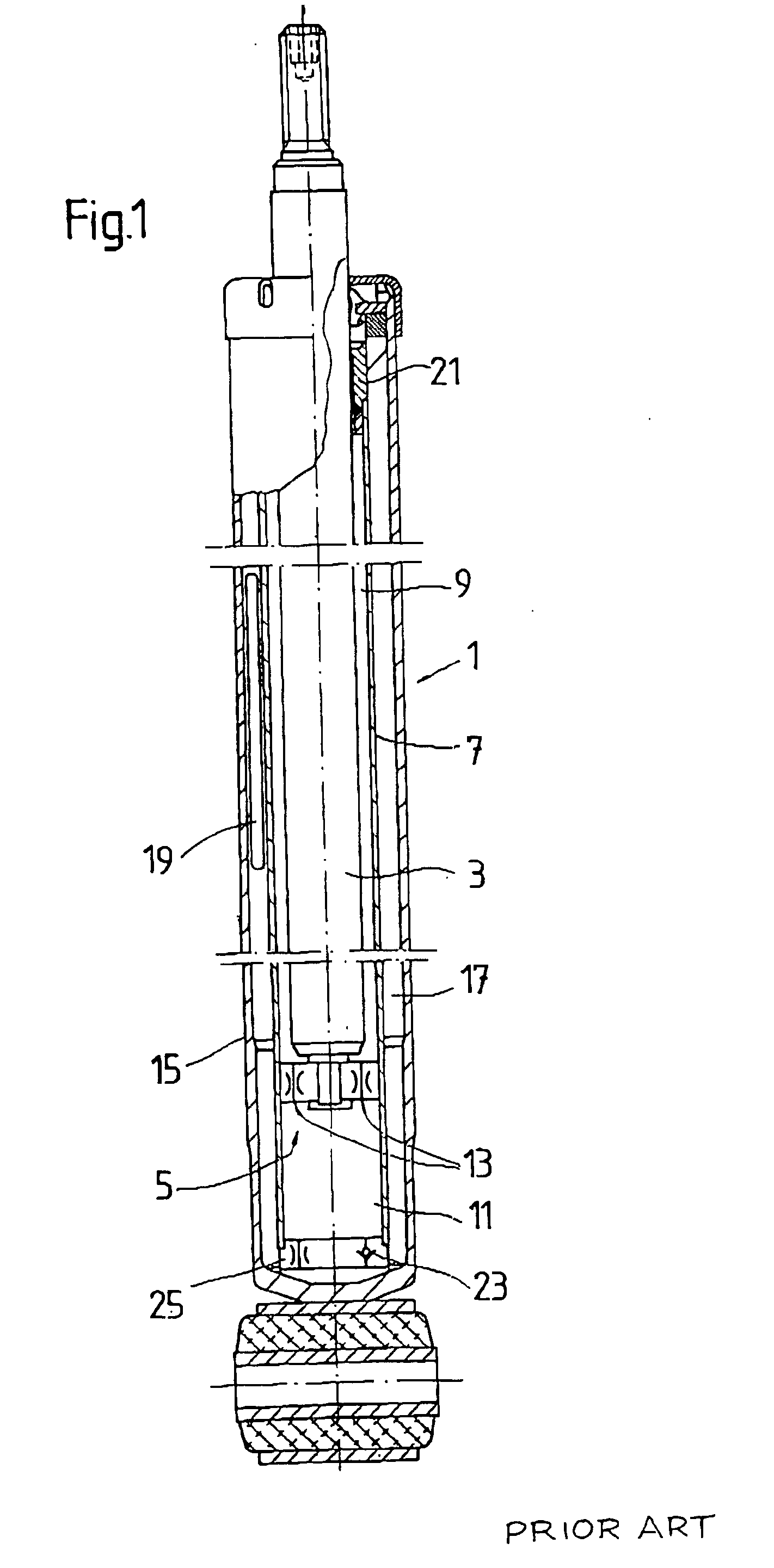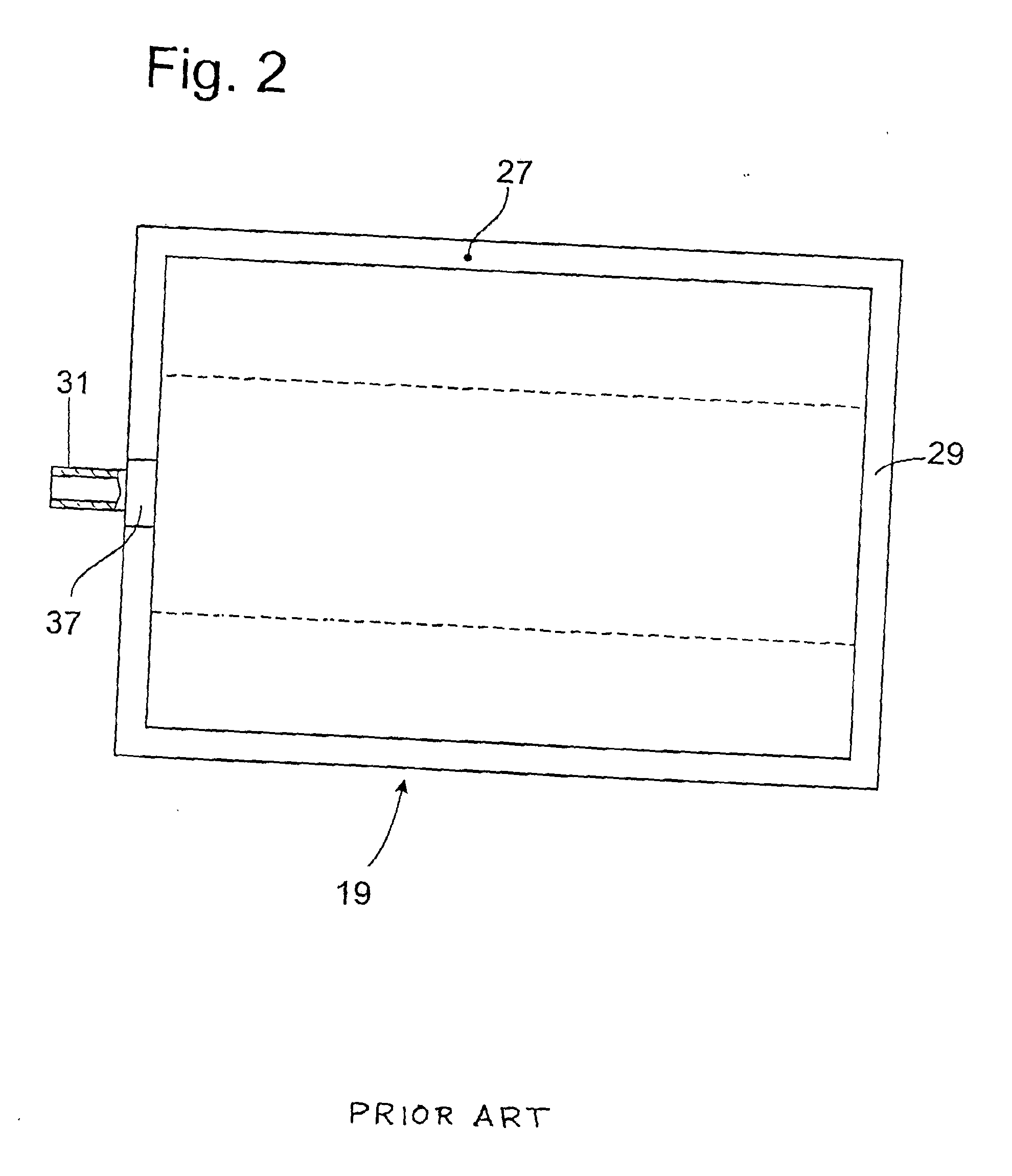Filling valve for a pressure vessel
a filling valve and pressure vessel technology, applied in the direction of shock absorbers, nuclear elements, nuclear engineering, etc., can solve the problems of high external pressure, premature failure high stress of the pressure vessel, so as to reduce the volume of the fastening part, eliminate the formation of folds, and improve the weld quality
- Summary
- Abstract
- Description
- Claims
- Application Information
AI Technical Summary
Benefits of technology
Problems solved by technology
Method used
Image
Examples
Embodiment Construction
[0025]FIG. 1 shows a vibration damper 1 of the two-tube design known in and of itself, in which a piston rod 3 with a piston 5 is guided with freedom of axial movement inside a pressure tube 7. The piston 5 divides the pressure tube into an upper working space 9 and a lower working space 11, the two working spaces being connected to each other by damping valves 13 in the piston.
[0026] The pressure tube 7 is surrounded by a container tube 15. The inside wall of the container tube and the outside wall of the pressure tube form a compensating space 17, which is completely filled by damping medium and a gas-filled pressure vessel 19, which extends up as far as a piston rod guide 21. At the bottom end of the working space 11, a bottom piece is located, which can be provided with a check valve 23 and a damping valve 25.
[0027] When the piston rod moves, the volume displaced by the piston rod is compensated by a change in the volume of the pressure vessel 19.
[0028] Referring to FIG. 2, t...
PUM
 Login to View More
Login to View More Abstract
Description
Claims
Application Information
 Login to View More
Login to View More - R&D
- Intellectual Property
- Life Sciences
- Materials
- Tech Scout
- Unparalleled Data Quality
- Higher Quality Content
- 60% Fewer Hallucinations
Browse by: Latest US Patents, China's latest patents, Technical Efficacy Thesaurus, Application Domain, Technology Topic, Popular Technical Reports.
© 2025 PatSnap. All rights reserved.Legal|Privacy policy|Modern Slavery Act Transparency Statement|Sitemap|About US| Contact US: help@patsnap.com



